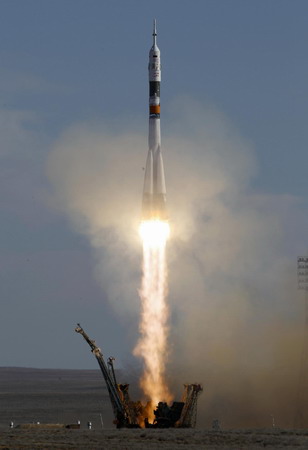Global General
Russia launches manned spacecraft to ISS
(Xinhua)
Updated: 2010-04-02 14:34
 |
Large Medium Small |
MOSCOW - A Russian spaceship with three astronauts aboard blasted off from the Baikonur cosmodrome in Kazakhstan early Friday, local media reported.
Russian television showed that a Soyuz-FG rocket carrying the Soyuz TMA-18 spaceship lifted off at 08:04 Moscow time (0404 GMT) from the southern Kazakh steppe.
The spacecraft is scheduled to dock with the International Space Station (ISS) at 09:26 Moscow time (0526 GMT) on Sunday after two days of flight.
The 23rd ISS mission, consisting of Russian cosmonauts Alexander Skvortsov and Mikhail Korniyenko, as well as US female astronaut Tracy Caldwell, will work at the space station for some 167 days.
It was the second time for Caldwell to visit the space after her maiden voyage in August, 2007. Both Russian cosmonauts were novices.
They will join Russian Oleg Kotov, American Timothy Creamer and Japanese Soichi Noguchi already working at the space station.
During their stay at the ISS, the crew members will receive three Russian cargo spaceships and three US space shuttles, in addition to conducting 42 scientific experiments and two space walks.
Meanwhile a Russian MIM-1 small research module called "Rassvet" (Dawn), which will be sent to the ISS by a US space shuttle in May, is also set to be docked to the ISS during the mission.
The 7.9-ton "Rassvet" module will be used to conduct a series of scientific experiments, especially those of biotechnology and material science. It can also be used to deposit experiment equipment.












